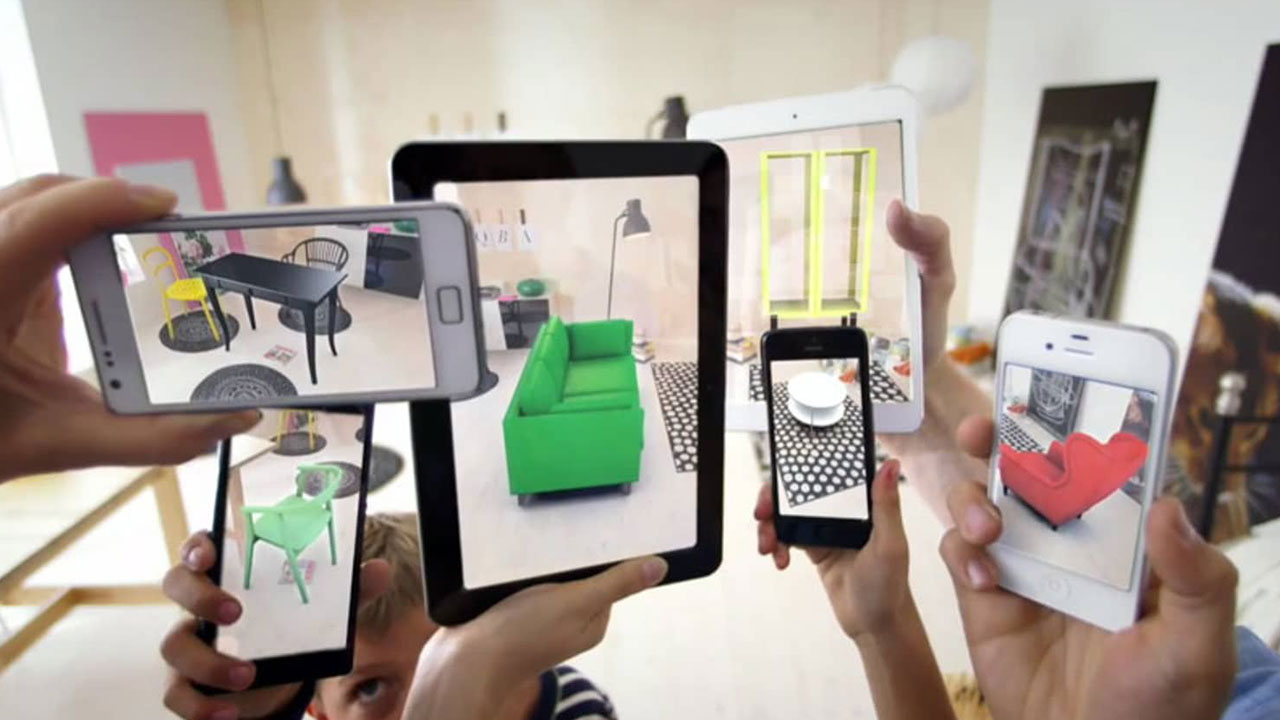The concept of augmented reality isn’t new and we’ve seen numerous examples successful augmented reality apps with images and sounds layered over what the user is experiencing in the real world to create interactivity and experiences like those seen in Minority Report or Iron Man.
Augmented reality should not be confused with “Virtual Reality” which creates a computer generated environment for users to interact with while maintaining a sense of engagement. Augmented reality works toward realism and adds visual, audio and other sensory objects to the real world as it exists now.
Google Glass is one of the most popular augmented reality applications in the media today and Google has provided a dedicated device to deliver the augmented experience in the shape of a set of glasses which respond to voice commands and can display overlayed images, video and sounds direct to the user, visually via a small projector.
How do augmented reality apps work?
Market based apps work by using the software to recognise a particular pattern and subsequently overlays a digital image to that point on the screen. In cases where the image is three dimensional or animated the effect will be a digital experience that plays out on the surface upon which the pattern is printed.
A common trend with augmented reality apps is to make a location based application which uses the device features to record the position and display relevant data based on the location or scanned image.
Applications based on augmented reality deliver a unique experience by overlaying 3D-generated computer imagery or some form of description over real time images obtained through a camera, webcam or phone. This seamless architecture requires a solid understanding of image processing and computer visualisation to track the markets or natural features on which the image is superimposed.
To create an authentic augmented experience the computer generated images must be intuitively designed, look realistic and be precisely aligned with the real environment in order to provide a high level of interactivity and a seamless user experience.
How can you use augmented reality for business?
From education to retail there are a myriad of opportunities to use augmented reality apps for business. From retail clothes fitting apps giving real-time experiences to shoppers before they purchase through to education apps that help students by adding historical context to a particular place, highlighting geometric shapes or showing hidden angles in buildings, the experiences of augmented reality and the real world are becoming closer.
If you look at the picture attached to this article you can even see how IKEA have developed an AR app which allows you to see how their furniture will look in your own home.
What is the future of augmented reality?
With augmented reality is finding a new home in wearable devices like glasses many users are keen to explore the potential of this technology in the next level of devices after mobiles and smartphones that provide a unique way to add these sensory enhancements to their daily lives.
The ultimate aim is to create a convenient environment with natural immersion of which Google Glass is just the first frontier. Many experts predict a continuous and rapid change in the technology behind augmented reality devices and we have only just started to see the potential of this exciting technology.
Looking For An Australian Augmented Reality App Developer?
Talk to App Consultants if you are looking to work with Australian augmented reality app developers. We work with experienced partners in augmented reality app development and can provide a unique blend of Australian experience in mobile app design and development combined with cost-effective offshore programming resources to ensure you can work within your budget for developing an augmented reality app in Australia.

